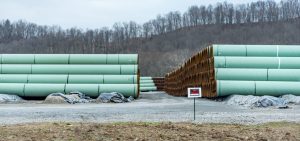News
Environmental Groups Challenge Ohio Gas Storage Permits
By: Mark Gillispie | AP
Posted on:
CLEVELAND (AP) — Environmental groups have asked an Ohio appeals court to revoke drilling permits granted by a state agency for construction of massive underground salt caverns to store natural gas liquids along the Ohio River, according to a lawsuit.

The lawsuit asks the appeals court to order ODNR to restart the application process and follow its rules.
ODNR spokesperson Stephanie O’Grady said the department does not comment on pending litigation.
The caverns will be created by injecting millions of gallons of fresh water underground into an underground salt formation in Ohio’s Monroe County. After construction, Powhatan Salt Company will turn the project over to Denver-based based company Mountaineer NGL Storage to store ethane, propane and butane, which are byproducts of natural gas drilling.
Salt solution created during construction would be transported by a pipeline beneath the Ohio River to an alkaline plant in West Virginia.
Mountaineer NGL Storage is finalizing a deal with a U.S. subsidiary of a Thailand-based company, PTT Global Chemical America, to provide ethane storage for a proposed multi-billion dollar petrochemical plant that would produce plastic pellets in nearby Belmont County.
Whether the petrochemical plant will be built is uncertain. PTT Global’s partner, a U.S. subsidiary of South Korea’s Daelim Industrial Co., quit the project in mid-July. A long-delayed decision on whether PTT will move forward with a new partner is expected sometime next year.
The Ohio lawsuit was filed on behalf of individuals by Concerned Ohio River Residents, FreshWater Accountability Project, Buckeye Environmental Network, Ohio Valley Environmental Coalition and Sierra Club.
The complaint says construction and operation of the caverns could lead to spills that would harm private and public water supplies, become a hazard for “potential explosiveness” after natural gas liquids are stored, and would create an eyesore along the Ohio River.

